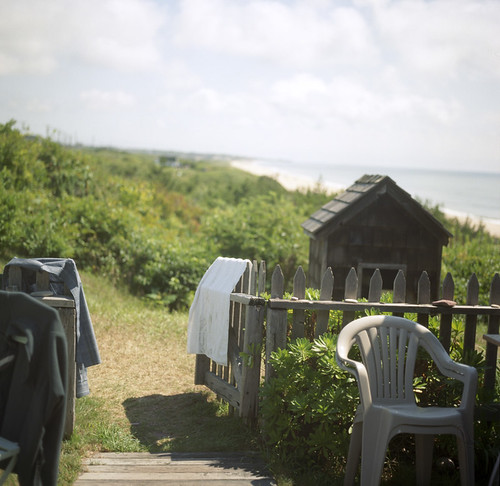Below you will find three simple videos which show three different photographers at work: Garry Winogrand, Bruce Gilden and John Chiara.
Gilden is almost aggressive in his behavior—leaping out in front of startled New Yorkers and blasting a huge flash in their face. His hard-bitten reaction ("I didn't know you own the street!") when someone complains to him is comical in that particular offended-New Yorker way, but also instructive: at some level, he seems genuinely surprised that anyone would question his behavior.
For another "street" shooter (that word will always have to appear in quotes) Winogrand is more subtle in his behavior. Even so, he appears out of place wandering around the streets of Los Angeles, snapping away at bemused pedestrians.
Chiara is notable for his dedication to an obviously impractical process for creating images—he uses a gigantic self-built camera which he has to tow behind him.
The "reality" of any photograph is an open question—Winogrand has some insight here—but the bodily reality of these photographers cannot be denied. They were all "really there" making these images. It is striking to see the basic strangeness of this activity. It would not be surprising to hear a casual observer label these people as "crazy," albeit in the un-serious sense. The things they do to impose themselves on their subjects are not "normal." But there's an internal consistency to all three, and when a method produces high-level work—WINOGRAND, all caps—it's beyond any questioning.
Winogrand:
Gilden:
Chiara:







